Credit to @RealSavageMan's American Airlines MD-80 for the wings, @Waffles101 for their MD-82 template, and @XAircraftManufacturer's XJ-90 for the original aircraft
EDIT: Made a small error in the paint on the underside of the wings and the horizontal stabilizer. Fixed version is here
Controls:
AG1: Landing Lights
AG3: Reverse Thrust
AG4: Navigation Lights
AG5: Ground Spoilers
AG6: Forward Taxi
AG7: Cabin Lights
VTOL: Flaps
Trim: Trim
Note that the MD-80 series has a center of lift placed further back meaning that it has a steeper rotation and climb. Rotate 5-10 degrees and climb at 15-20 degrees. At cruise, keep the nose up a bit to maintain level flight. During landing, watch your speed and adjust throttle as necessary as the aircraft may descend faster than desired. Flare before touchdown and cut engine power once on ground, activate spoilers and thrust reverse, use braking as necessary.
About the MD-80/87 Variant
The McDonnell Douglas/Boeing MD-80 is a series of five-abreast single-aisle airliners developed by McDonnell Douglas. It was produced by the developer company until August 1997 and then by Boeing Commercial Airplanes. The MD-80 was the second generation of the DC-9 family, originally designated as the DC-9-80 (DC-9 Series 80) and later stylized as the DC-9 Super 80 (short Super 80). Stretched, enlarged wing and powered by higher bypass Pratt & Whitney JT8D-200 engines, the aircraft program was launched in October 1977. The MD-80 made its first flight on October 18, 1979 as the Super 80 and was certified on August 25, 1980. The first airliner was delivered to launch customer Swissair on September 13, 1980, which introduced it into commercial service on October 10, 1980.
In January 1985, McDonnell Douglas announced it would produce a shorter-fuselage MD-80 variant, designated MD-87 (DC-9-87), which would seat between 109 and 130 passengers depending upon configuration. The designation was intended to indicate its planned date of entry into service, 1987. With an overall length of 130 ft 5 in (39.75 m), the MD-87 is 17 ft 4 in (5.28 m) shorter than the other MD-80s but is otherwise generally similar to them, employing the same engines, systems and flight deck. The MD-87 features modifications to its tail, with a fin extension above the tailplane. It also introduced a new low-drag "beaver" tail cone, which became standard on all MD-80s.
About SAS/Scandinavian Airlines
IATA Code: SK
ICAO Code: SAS
Callsign: SCANDINAVIAN
Alliance: Star Alliance
Primary Hub: Copenhagen-Kastrup Airport, Denmark (IATA: CPH)
Headquarters: Stockholm, Sweden.

A preserved SAS DC-3, SE-CFP, at Khrabrovo Airport (IATA: KGD, ICAO: UMKK) for an airshow on July 18th, 2013

An SAS DC-10-30 'Haakon Viking' (LN-RKB) at Los Angeles International Airport (IATA: LAX / ICAO: KLAX) in October 1977 in the 'White Top' livery

An SAS MD-81 'Dana Viking' (OY-KHO) at Stockholm Arlanda Airport on May 7th, 1991 wearing the 'Belly Stripes' livery. On December 27th, 1991, this aircraft operating as Flight 751 crashed shortly after takeoff with no fatalities, becoming known as the 'Miracle at Gottröra'.

An SAS Airbus A330-343 'Bele Viking' registered LN-RKT at Stockholm Arlanda Airport (IATA: ARN, ICAO: ESSA) on August 6th, 2016 in the SAS Red/Blue Livery used from 1998-2019.

An SAS Airbus A350-941, SE-RSA, at Chicago O'Hare International Airport (IATA: ORD / ICAO: KORD) on May 1st, 2021 wearing the new 'Modern Silver' livery... Who thought this design was a good idea?
Scandinavian Airlines, more commonly known and styled as SAS, is the flag carrier of Denmark, Norway, and Sweden. SAS is an abbreviation of the company's full name, Scandinavian Airlines System or legally Scandinavian Airlines System Denmark-Norway-Sweden. Part of the SAS Group and headquartered at the SAS Frösundavik Office Building in Solna, Sweden, the airline operates 180 aircraft to 90 destinations (as of December 2019). The airline's main hub is at Copenhagen-Kastrup Airport, with connections to 109 destinations around the world. Stockholm Arlanda Airport (with 106 destinations) is the second largest hub, with Oslo Airport, Gardermoen being the third major hub of SAS. Minor hubs also exist at Bergen Airport, Flesland, Göteborg Landvetter Airport, Stavanger Airport, Sola, and Trondheim Airport, Værnes.
The airline was founded in 1946 as a consortium to pool the transatlantic operations of Swedish airline Svensk Interkontinental Lufttrafik, Norway's Det Norske Luftfartselskap and Det Danske Luftfartselskab of Denmark. The consortium was extended to cover European and domestic cooperation two years later. In 1951, all the airlines were merged to create SAS. SAS has been described as "an icon of Norwegian–Swedish–Danish cooperation".
SE-DMA & D-IEVX: Hidden Danger
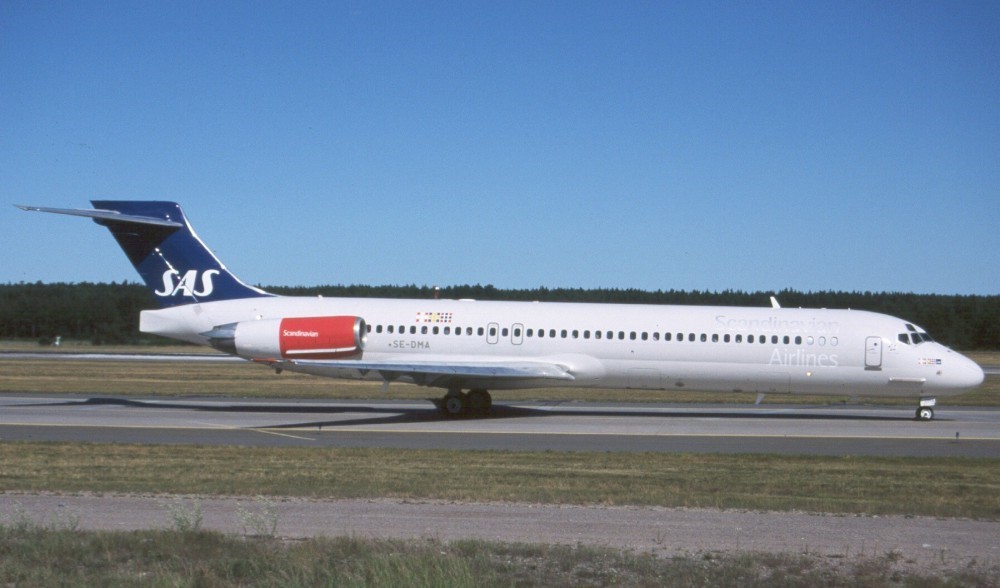
Pictured: The primary accident aircraft, a SAS McDonnell Douglas MD-87 'Lage Viking' registered SE-DMA at Sweden's Stockholm-Arlanda Airport on July 5th, 1999.

A Cessna 525A CitationJet CJ2 at Satu Mare Airport (IATA: SUJ, ICAO: LRSM) in Romania on December 4th 2014, similar to the other accident aircraft. I was unable to find a photo of the accident aircraft itself.
October 8th, 2001. A Monday morning at Milan-Linate Airport (IATA: LIN) in Italy. Scandinavian Airlines Flight 686, a McDonnell Douglas MD-87 lines up with Runway 36R preparing for a return flight to Copenhagen-Kastrup Airport in Denmark. On board are 110 people, 6 crew members and 104 passengers. The weather is less than desirable, with a thick fog having settled over the airport, drastically reducing visibility.
Earlier that day, a Cessna Citation operated by Air Evex flying from Cologne Bonn Airport, Germany (IATA: CGN) lands at Linate with four people on board, two pilots, a Cessna sales manager, and a potential customer. The aircraft landed at 06:59 (6:59AM) despite neither of the pilots of the Cessna possessed certification for landings with visibility less than 1,800ft/550 meters. The aircraft then taxied to the general aviation ramp.
It should be noted that at the time, Linate Airport was not well maintained and left much to be desired. The ground radar was inactive despite the airport having received a replacement for their old ground radar. Guidance signs along the taxiways and runways were degraded and worn to the point where they fell well below regulation standards. Vital taxiway lighting was inoperative. Multiple motion sensing alarms designed to prevent runway incursions were also turned off in order to prevent false alarms. If you're still following and reading, you can see where this is going.
In the thick fog, the Cessna began to taxi out to the general aviation runway (Runway 18R/36L). However due to the poor visibility and lack of readable markings, the Cessna took a right turn towards the main runway instead of a left which would take it to the general aviation runway. The pilots of the Citation correctly identified a marker 'Sierra 4/S4' which should have alerted the controller that the aircraft was not where it should be, however, the ground controller disregarded this as the S4 marker did not appear on his maps. The last line of defense, a series of red lights at the area separating a taxiway from a runway known as a 'stop bar', was on, but due to a technical issue, the stop bar lighting was connected with the taxiway lightning, meaning if one got turned off, both were turned off, leading to the stop bars being left on. Pilots are trained to NEVER cross the stop bar if it is red.

An example of stop bars.
At 08:09 (8:09 AM), the Cessna pilots continue onto Runway 18L/36R, believing they are on the North Apron of the airport. The dice are now cast and what happens next is inevitable. At the same time, the tower controller clears Flight 686 for takeoff. Nobody at this point, including the Cessna pilots, are unaware of where the Cessna Citation actually is, directly in the middle of Runway 18L/36R.
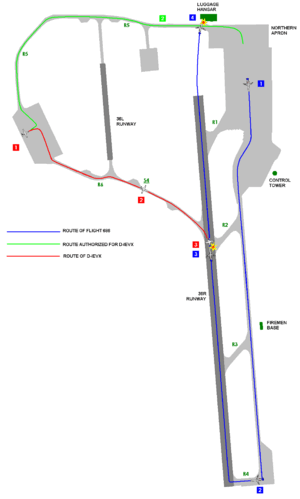
Pictured. A map of the airport and the routes taken by both aircraft
SAS 686 begins its takeoff roll at 08:09:28, completely unaware of the danger lurking ahead of them. At around 08:10, around 50 seconds after takeoff clearance is given, the aircraft begins to rotate and the nose wheel leaves the ground. At that moment, the pilots of SAS 686 would have seen a shadow emerge from the thick fog along with several illuminated landing lights, however, it is too late. At 8:10:21, the nose gear of the MD-87 collide with the Citation's vertical stabilizer, shearing it off, while the right main landing gear cuts through the body of the Cessna. The Cessna Citation is all but destroyed, and things happen in rapid succession from here.
The force of the impact rips the right main gear off the MD-87, sending it and debris fragments backwards, wedging themselves between the aircraft and the right N2 engine. The force of this causes the right engine to separate from the aircraft. The pilots desperately attempt to get the stricken aircraft airborne, lifting off the ground to a height of 40ft/12m for just over 10 seconds before sinking back down as the left engine had ingested significant amounts of debris, resulting in not only thrust reduction, but thrust asymmetry. Without the right main landing gear, the right wing touches down first, scraping against the ground and causing the aircraft to pivot to the right. In an attempt to slow the plane and counteract the pivot, the pilots activate the thrust reverser on their remaining engine. Later simulations would show that the action of using the thrust reverser likely saved many more lives, as the aircraft could’ve continued to pivot more sharply to the right, leading to the MD-87 colliding with the terminal building and aircraft which were boarding passengers.
Despite this, nothing more can be done. Shortly after colliding with the Cessna, SAS 686, travelling at a speed of 156mph/251kmh collides with a baggage handling facility. The force of the impact and the resulting fire from the fully fueled aircraft ensures that out of all 110 people on board, none survive. Other aircraft and other airport workers call the tower reporting hearing an explosion and seeing a fire streaking down the runway. The crash of SAS 686 would take several minutes to be fully registered by ATC, at which point they finally realized what was happening and finally pressed the alarm button. It would also take over 20 minutes for anyone to identify the wreckage of the Cessna. In total, 118 people died, including all four people on the Cessna Citation, all 110 on SAS 686, and four people who were working in the baggage handling facility.
An investigation was launched, initially believing terrorism to be a key factor due to the fact that this took place less than a month after the September 11th attacks, however that was quickly ruled out. The cause of the Linate Airport Disaster was attributed to low visibility conditions, ATC error, and pilot error stemming from both low visibility, communication errors, and the lack of adequate markers and safety measures due to an overall poorly managed airport. Linate Airport would undergo renovations after the accident and several individuals including the airport director and one of the ATC workers faced criminal charges for manslaughter and negligence.
At the time of writing, it remains the deadliest aviation disaster in Italian history, the worst accident for SAS, and the deadliest accident involving a McDonnell Douglas MD-87.
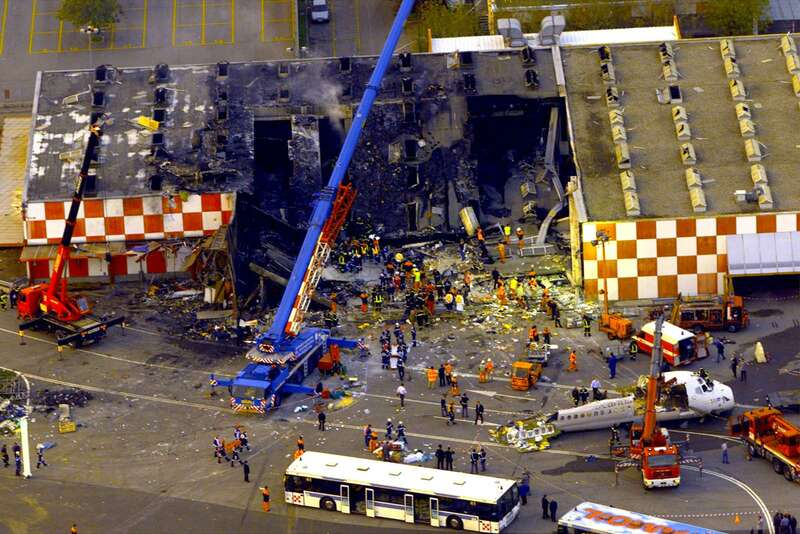
Pictured: The destroyed baggage handling facility

Pictured: Debris of SAS 686's right engine and right wing
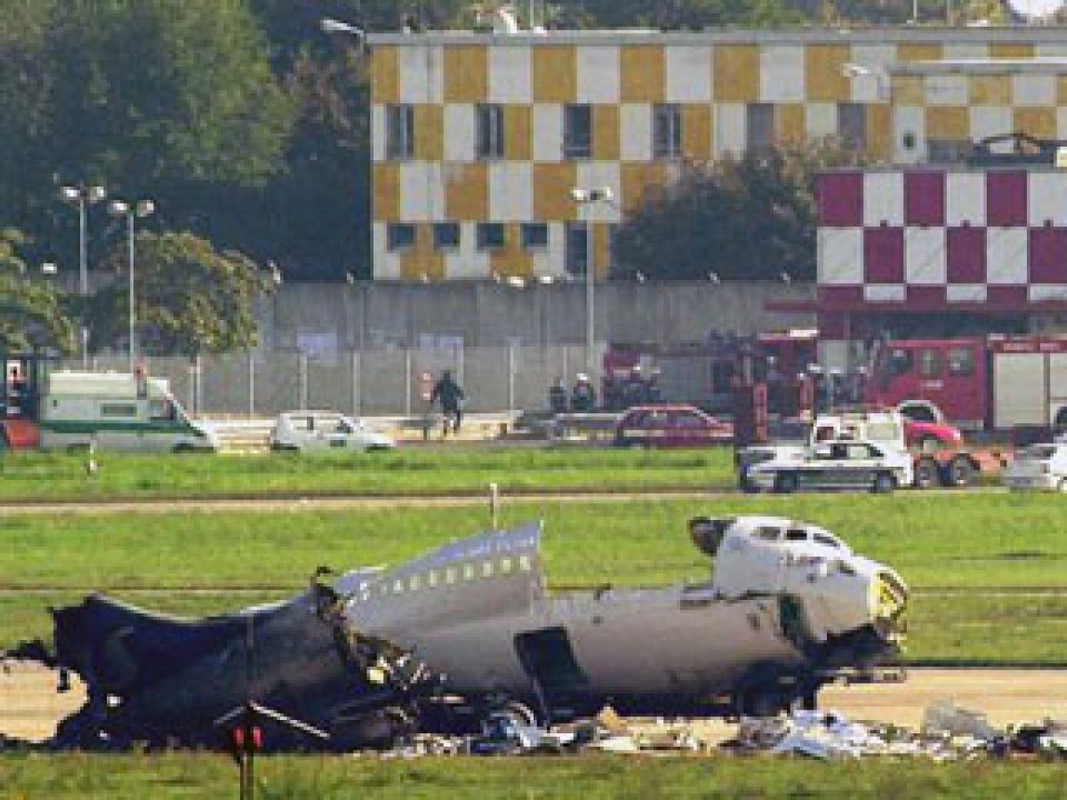
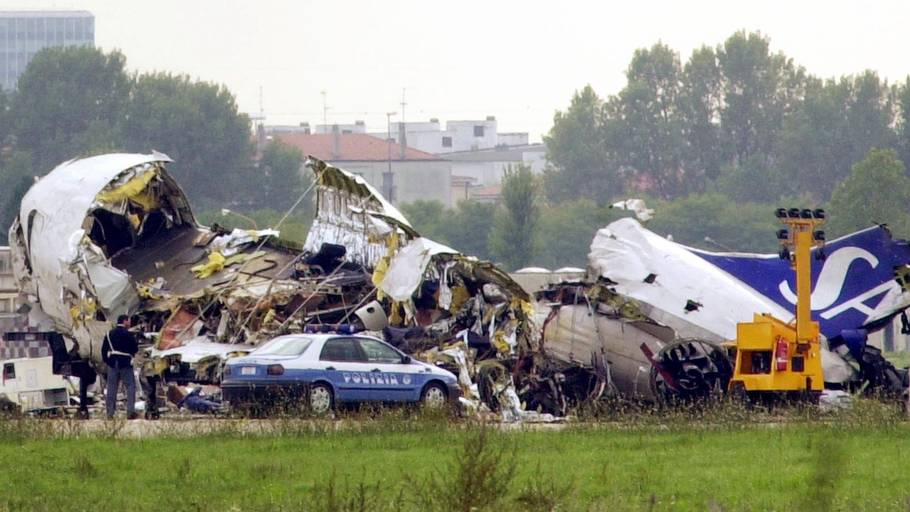
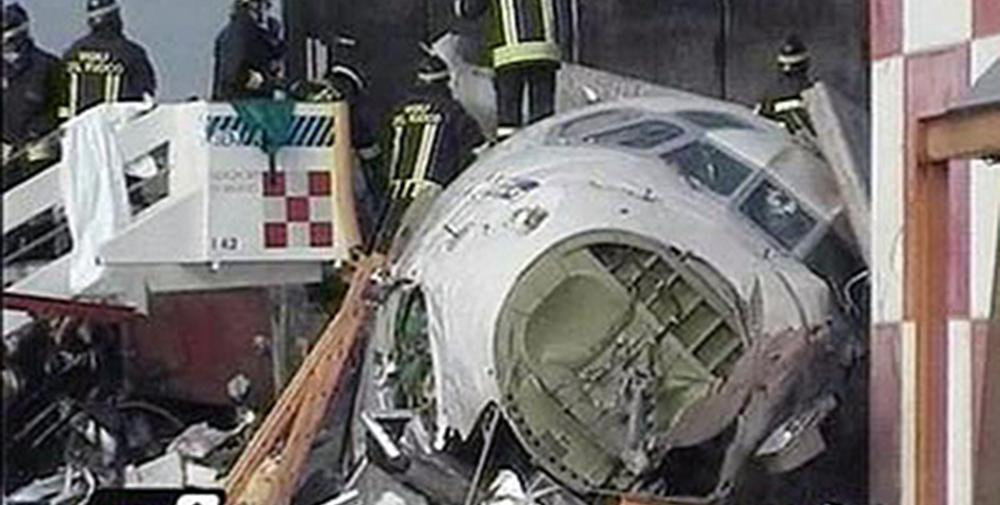
Pictured: The wreckage of SAS Flight 686 both before and after removal of what remained of the main fuselage from the baggage facility
ANSV Final Report
Wikipedia Page
CVR Transcript
Note: The CVR cuts off shortly after the impact with the Cessna as the device was powered by the right engine. The right engine detached from the pylon holding it, meaning that power to the CVR was cut.
In Depth Video Explanation
News Archive Footage October 8th 2001
With all that being said... one thing I learned from making this... well... letters are hard to make with fuselage blocks… especially letters and symbols with a fancy font…
Also I am uploading this on 9/29... it is my 21st birthday at the time of writing and I can feel the boomer energy entering my body. Regardless, I hope you enjoy my latest work and have a safe flight. Now... what to make next? I have some ideas but I can't decide...
Specifications
Spotlights
- Inuyasha8215 1.9 years ago
- Mikos 3.2 years ago
- OpenHere 3.2 years ago
- JP11 3.2 years ago
- TheFlightGuySP 3.2 years ago
- MAPA 3.2 years ago
General Characteristics
- Predecessor McDonnell Douglas MD-82
- Successors 2 airplane(s)
- Created On Windows
- Wingspan 108.8ft (33.2m)
- Length 130.3ft (39.7m)
- Height 31.9ft (9.7m)
- Empty Weight N/A
- Loaded Weight 60,990lbs (27,665kg)
Performance
- Power/Weight Ratio 0.994
- Wing Loading 39.2lbs/ft2 (191.5kg/m2)
- Wing Area 1,554.7ft2 (144.4m2)
- Drag Points 18508
Parts
- Number of Parts 592
- Control Surfaces 9
- Performance Cost 2,566

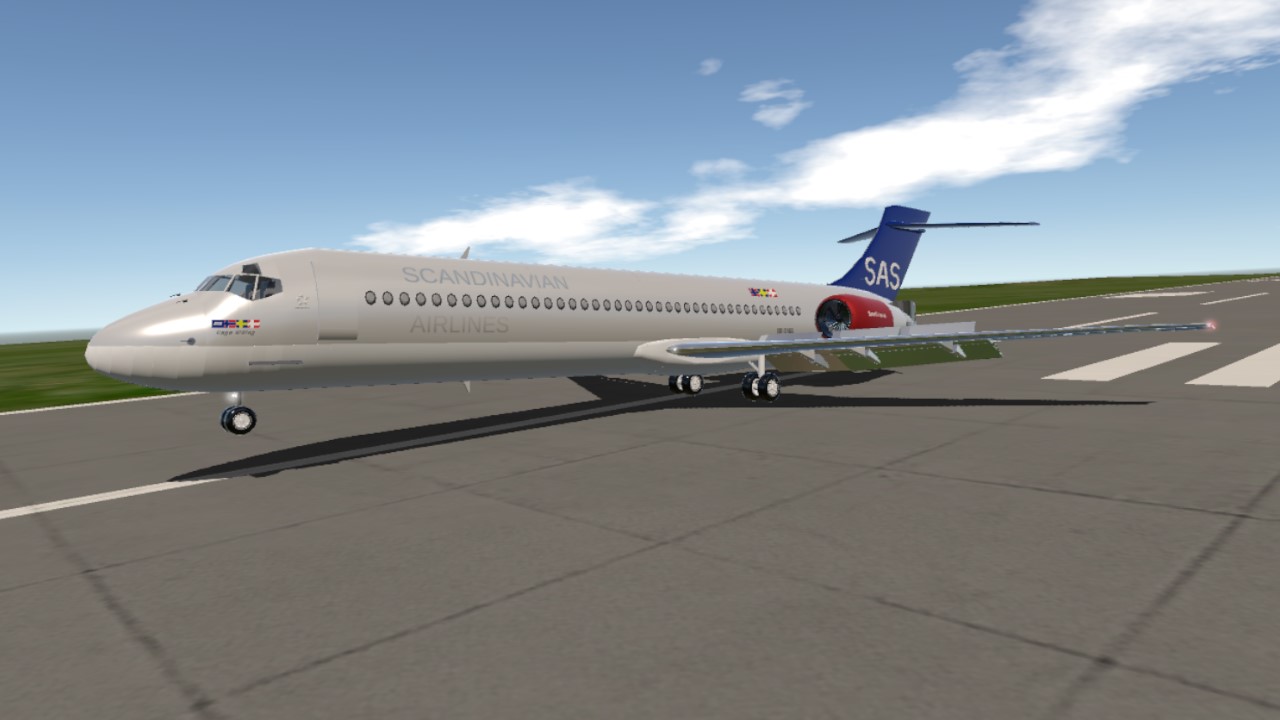

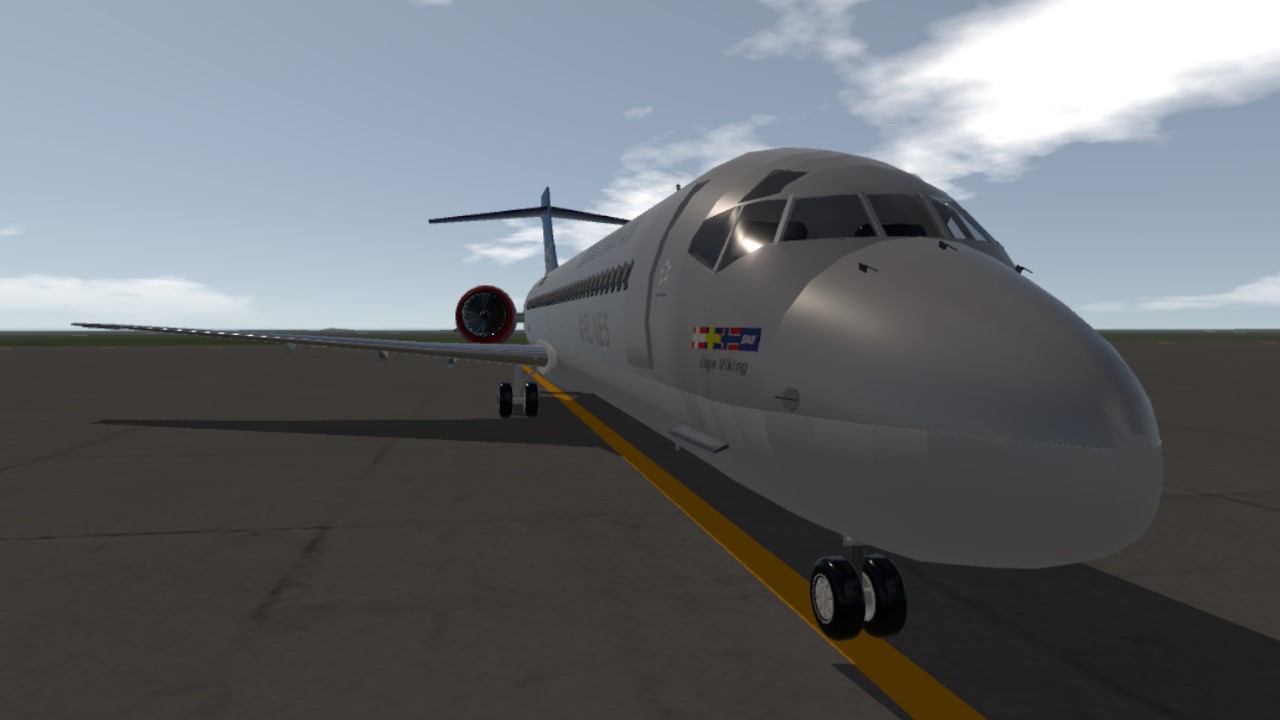
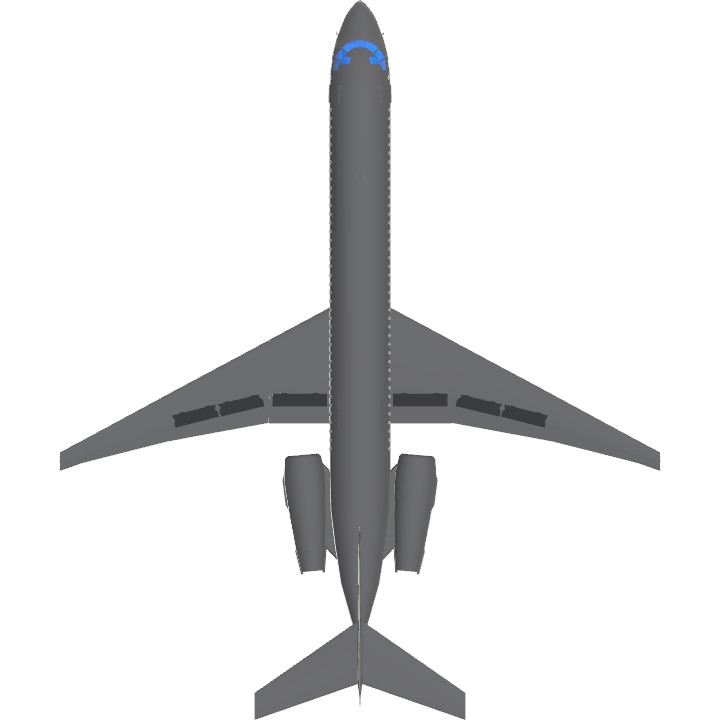
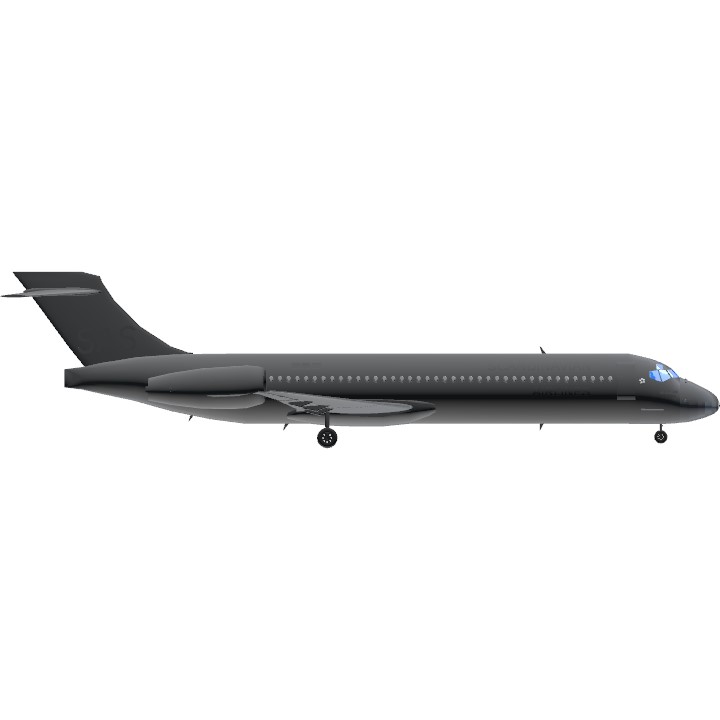
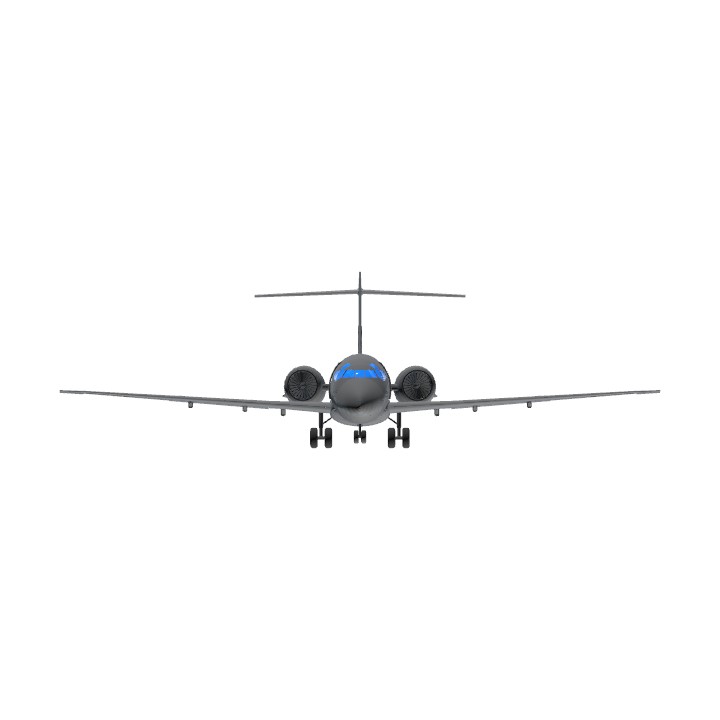
Comments Link
One last thing... My skill issue struck again and I made some small errors with the paint beneath the wings and on the horizontal stabilizer. Here is the paint correction fixed version
.R.I.P. all who could not survive in this accident
@AlbertanPlaneMaker "118 mods" bruh 💀💀💀💀
@CanadianAircraftBuilder
There we go... you are tagged on the post
@CanadianAircraftBuilder
Aight, I’ll do that right now! Give me a moment.
@CanadianAircraftBuilder
I could tag you on an unlisted post so that you get a taste of it if you’d like… or you could wait a few weeks. Either way, this one’s from a pretty significant incident that gets overshadowed by another.
@CanadianAircraftBuilder
At the moment, no. However, I am currently working on another Canadian airline livery. Can’t say much else than that at the moment tho.
@JacksEpicGamingYT
I have like 50 mods and only like… 8 are active 😅
Really all I use are Overload and Fine Tuner, plus a few mods that add other airports and islands into the standard map.
@JacksEpicGamingYT
Thank you, I’ll consider that offer! I’ve played around with SP Extra and lighting effects before but my game and the mod just don’t get along… especially in multiplayer. I’ve also been playing with some better weather/cloud mods while trying to not make my PC go full nuclear meltdown.
@Simpleplanes1733
Thank you!
I quite like this plane and you nailed it well done 👏👏
@DeadlyDialga Yeah, that's how it was when I first started on the website.
Perhaps I should make a "guide for website beginners" forum.
Last Batch of VERY late tags for original creators of aircraft components, yes I know, skill issue+two working brain cells+whatever else. I know XAircraftManufacturer is already aware of the aircraft, but I should do this anyways.
Tags for original creators of airframe & additional parts
@XAircraftManufacturer @Waffles101 @RealSavageMan
More Late Tags because I didnt know how they worked and that you can only do 3 people at a time...
@X99STRIKER @SpartanSR91 @IndesterSion
@TheFlightGuySP
Really wish I had been told this stuff when I started... I'd say I look like an idiot but I mean there's no questioning that
@DeadlyDialga An important note: only the first three people tagged in a comment will actually recieve notifications.
That means everyone tagged after JP11 didn't receive a notification.
@CanadianAircraftBuilder
Ah, I wasn’t sure if @-ing them in the description worked the same as tagging or not. I’ll do that now.
@daju123
That would be interesting... United Express 6291 DID occur in my home state... but there's a problem with that. As far as I can tell... there's no reliable template for a BAe Jetstream... and my skills with creating an original aircraft from scratch are far from being... well... good.
I'm afraid that at least for the time being, the answer is no. I'll add that to my list of things to do in the 'potential future projects' section though.
@DeadlyDialga What about Jetstream 41?
@Gro
y e s
@daju123
No idea what that is... google doesn't turn up anything either
Its the MP airliner
@DeadlyDialga Can you make a Mido 23?
@JacksEpicGamingYT
Wow a compliment! Don’t get many of those anymore 💀
No but seriously, thank you.